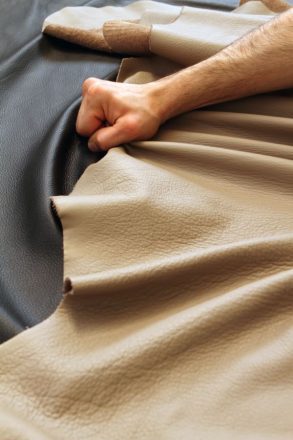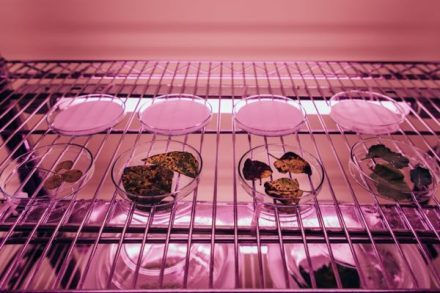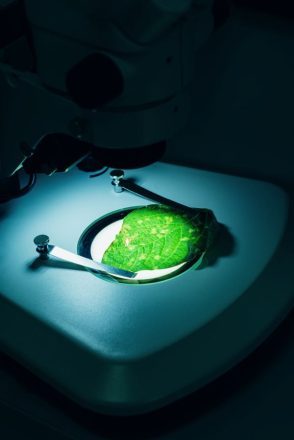Smart Key: New generation tanning – towards a leather industry with a reduced chemical impact? The - Première Vision Paris - Denim Première Vision - Première Vision New York
What material wins the prize for the stormiest debate? Leather would probably be the gold medalist for the lively arguments it generates. While traceability, no risk of deforestation and animal welfare are the key links in a virtual supply chain, the stages after the sourcing of skins are just as crucial. From the wet work to the finishing, there are many steps, all of which require water, energy, chemical inputs and which generate waste.
Between encouraging signs of development and the reality of the market, where does the truth lie?
The mineral kingdom
A technique refined during the 20th century, chrome tanning was attractive because the leather it produced was soft, resistant, available in a wide range of colors and suitable for many different products. In addition, it was a speedy process, requiring just 24 hours to tan a skin.
This success catapulted it into pole position in the list of the most widely-used tannins, scooping up more than 80% of the leather market.
An idyllic scenario, or it would be except for the presence of the hexavalent form of this mineral, Chromium 6, which has been challenged for its toxicity risks. If chrome sulphates are used, in the form of Chromium 3, there is no risk to human health, but in some cases, under certain conditions, these can oxidize and become Chromium 6.

This product can provoke allergic reactions in contact with the skin, and have serious consequences if it is inhaled, and that has led to it being classified as CMR (Carcinogenic, Mutagenic or toxic to Reproduction) and it is regulated by Reach with a maximum threshold of 3mg/kg.
Read also: Smart Key: Environmental management: catalyzing the leather industry’s shift to sustainability
The revenge of the plant kingdom
This is the ancestral version of tanning. Quebracho, mimosa and chestnut were the historic stars used to produced tanned leathers for saddles and soles. Employed just as often in leather goods for its authentic behavior, its colors that patinate over time, vegetable tanning was the preserve of fans of a compact and attractive density.

The rise in CSR interrogations has repositioned this type of tanning at the center of research in a quest to achieve the qualities of chrome tanning using the technology of plants. It has evolved and treatment times have been reduced meaning it can now achieve its qualities in two days. It is with tara or gall nuts that the new-generation vegetable tanning is achieved, showcasing qualities of softness and roundness and developed in dazzling shades hitherto impossible in plant-based tanning.
Synthetics, new fantasies?
Chrome-free, metal-free, the demands of brands evolve in line with the changing regulations on metals, leading them to anticipate the upcoming demands by calling for products without any traces of chrome or metals. Formulations are now focused on tanning agents made from synthetic polymers. These new formulations have made it possible to develop dense and supple leathers with a white base color, meaning that can take on pure white, bold pastels or intense bright shades.

Let us look in more detail now, and decode the key points for responsible tanning…
Smart Key #1 – Environmental management, always at the heart of considerations
As with all major transformations of a material, the key parameters to watch are those allowing a global monitoring of all stages. Chrome can present a risk but it can also be non-problematic – the essential element is rigorous management of operations. ISO 14001, LWG or ICEC can certify the absolute vigilance along the leather value chain.

Effluent treatment is one of the most primordial indicators. Each tanning method requires a specific treatment. Vegetable tanning requires plenty of water and plant-based active ingredients, generating substantial processing operations, whereas chrome requires less water but the tanning sludge has to be purified before being sent to a specific waste processing center.
European tanneries are bound by the Framework Directive on Water and are listed as IPCE (Controlled installations for protection of the environment). This is a strict framework to prevent and reduce pollution in aquatic environments and thus ensure that waste water is rigorously processed to reduce or eliminate discharge of certain dangerous substances.
Smart Key #2 – Keep abreast of formulations and regulations
In the same way that we need to keep an eye on the changes to level of chrome, with thresholds set by Reach that should fall to 1mg/kg by 2026, other active ingredients should be examined. Synthetic tanning agents can require substances that are currently under scrutiny.
Bisphenol A was regulated by Reach, Bisphenols BPS and BPF are currently being studied with a view to restricting them, suspected of the same toxicological effects.
Glutaraldehyde, frequently used in synthetic tanning, has been added to the candidate SVHC list (substances of very high concern) and its use is strictly regulated.

The tanning agent Zeology® from Nera Tanning is an answer to these problems as the skins are transformed through the use of zeolite, a rock containing aluminum, silica and oxygen. Formulated and verified for its compliance with the ZDHC (Zero Discharge of Hazardous Chemicals) and Cradle to Cradle Platinum regulations, it represents a responsible option giving result similar to those using chrome in terms of product properties.
Ecotan® from Silvateam also seeks to reproduce the characteristics of chrome in terms of softness, suppleness and strength, through a mixed tanning technology using plant tannins and biopolymers. Free from chrome and glutaraldehyde, it offers round, supple leathers with deep, intense colors. Developed with partner tanneries and a fertilizer manufacturer, the quality and absence of toxicity of its by-products mean they can become organic fertilizer at the end of life.
Smart Key #3 – Aim for circularity
There are a number of options here. First of all, recycling chrome.
By repurposing production offcuts containing chrome, processed and transformed into a liquid solution, Evolo ® from Sciarada stands out. These suede leathers require no additional input of chrome and procedures have been revised to reduce the number of stages in the transformation process and thus reduce consumption of water, energy and chemical products.
Another option is recycling plant by-products. This is where innovation in vegetable tanning finds its resources. Olive leaves for the WetGreen® from Olivenleder and rhubarb roots for Rhabarberleder®, launched this search for other plant resources in the by-products from the agri-food or cosmetic industries. Their suppleness, distinctive odor and reduced environmental impact make them a great asset.

Specialists in fish skins, Ictyos uses the by-products from brewing and winemaking as both tannins and colorants. A double benefit, to showcase the naturalness of developments, through sophisticated colors in hop tones or revealing the reddish shades of ripe grapes.
As for any complex subject, generating often polarized discussions, leather is a material that deserves to be examined in detail. The many characteristics of this material mean it is worth taking the time to understand these issues in depth, and the many possible solutions for renewal available.
